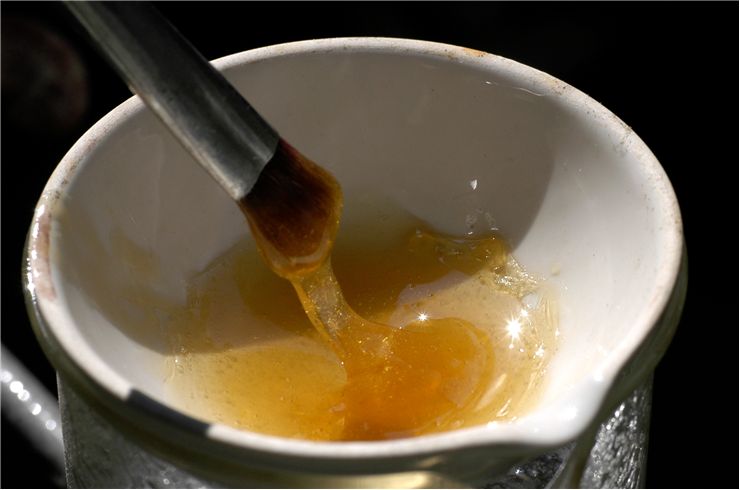History of Animal Glue
Glues created from natural ingredients started being used even as far as 200,000 BC, but more advanced glues made from prolonged boiling of animal connective tissues were a newer technique that was not used widely. However, from the moment such adhesives appeared, they provided significant advantage over plant-made glues that utilized many forms of rubber-based compounds.
The first confirmed appearance of animal glues comes from 2000 BC in Ancient Egypt, where only very wealthy nobles had access to it. Records from that time protected in hieroglyph images and stone carvings showed the preparation of glues and their use in creating wood furnishings and mural paintings for Pharaohs. Some original examples of such glue-work survived to this day in tombs of buried Pharaohs. By the time Greek and Roman empires rose, animal glue was more common, used much more in regular life and various processes (wood veneering, wood marquetry, fixing of broken pottery). During the same time on the other side of the world, Chinese inventors and chemist experimented with animal glues made from fish, ox and stag horns. They used their glue not only for woodwork and quick fixes for broken tools, but also as a tool for preserving painted images and small medicinal use cases. Many cultures around the world managed to find their own variations of manufacturing and using animal glues (for example Native Americans who used glues as water resistance coating, binders, hair products and general purpose glues).
After fall of Roman Empire, the knowledge of glue-making was saved in Europe, but it was not used much except by woodworkers. The tradition of regular production of animal glues resurfaces all around the Europe in 16th century with arrival of Renaissance, which provided many craftsmen, scientists and inventors to perform significant advancements. Woodworkers of that time started using animal glues for almost every piece of furniture they created, with unused animal glue being stored as powder that could easily be re-mixed back into liquid state. In addition to woodwork (which of course included and creation of all kinds of stringed wood instruments), renaissance bookmakers and painters used glue substances to harden images and illuminate manuscripts.
With the arrival of industrial revolution, glue manufacture became more widespread. One of the most famous glue movements happened after Peter Cooper created this glue factory in 1821, Milwaukee Tanning Industry created glue factory in 1899 and L.D. Davis facilities that produced animal glues during American Great Depression. The largest contributors of dead animals during 19th and 20th century were ranchers, slaughterhouses, meat packing companies and tanneries.
Animal glue industry almost completely collapsed in the decades after chemist started experimenting with synthetic glues after 1930s. Today, animal glue factories are rare, and they mostly produce glue products for specific use case scenarios that cannot use artificial glues. However, many glue companies find significant work by using animal remains not to produce glue, but similar substance called gelatin that was today used in many food products, medicine, and enhance production of wood, leather, bark and paper products.
